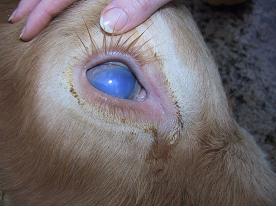Malignant catarrhal fever is a highly contagious viral infection that affects a wide range of livestock animals, including cows, sheep, goats, and deer. Understanding the life cycle of this disease is important for developing effective strategies to control and prevent its spread. In this blog post, we'll explore the life cycle of HS disease and discuss some of the key considerations for managing this infection in livestock animals.
The life cycle of this disease begins when the virus is transmitted from an infected animal to a susceptible host, typically through secretions such as saliva or nasal discharge. Once inside the host, the virus multiplies and spreads through the body, causing a range of symptoms such as fever, conjunctivitis, and respiratory distress. In severe cases, the disease can lead to death.
Malignant catarrhal fever is highly contagious and can be transmitted from one animal to another through direct contact or through contaminated objects such as feed, water, or equipment. The virus can also be transmitted to humans through contact with infected animals or their secretions.
To control malignant catarrhal fever, it is important to implement biosecurity measures such as quarantine, vaccination, and good hygiene practices. In addition, it is important to promptly identify and isolate infected animals to prevent the spread of the disease.
By understanding the life cycle of malignant catarrhal fever and implementing effective management strategies, it is possible to control and prevent this highly contagious infection in livestock animals.
Keywords: Malignant catarrhal fever, livestock animals, cows, sheep, goats, deer, viral infection, transmission, secretions, saliva, nasal discharge, fever, conjunctivitis, respiratory distress, death, contagion, direct contact, contaminated objects, feed, water, equipment, biosecurity, quarantine, vaccination, hygiene, isolation, management strategies.

